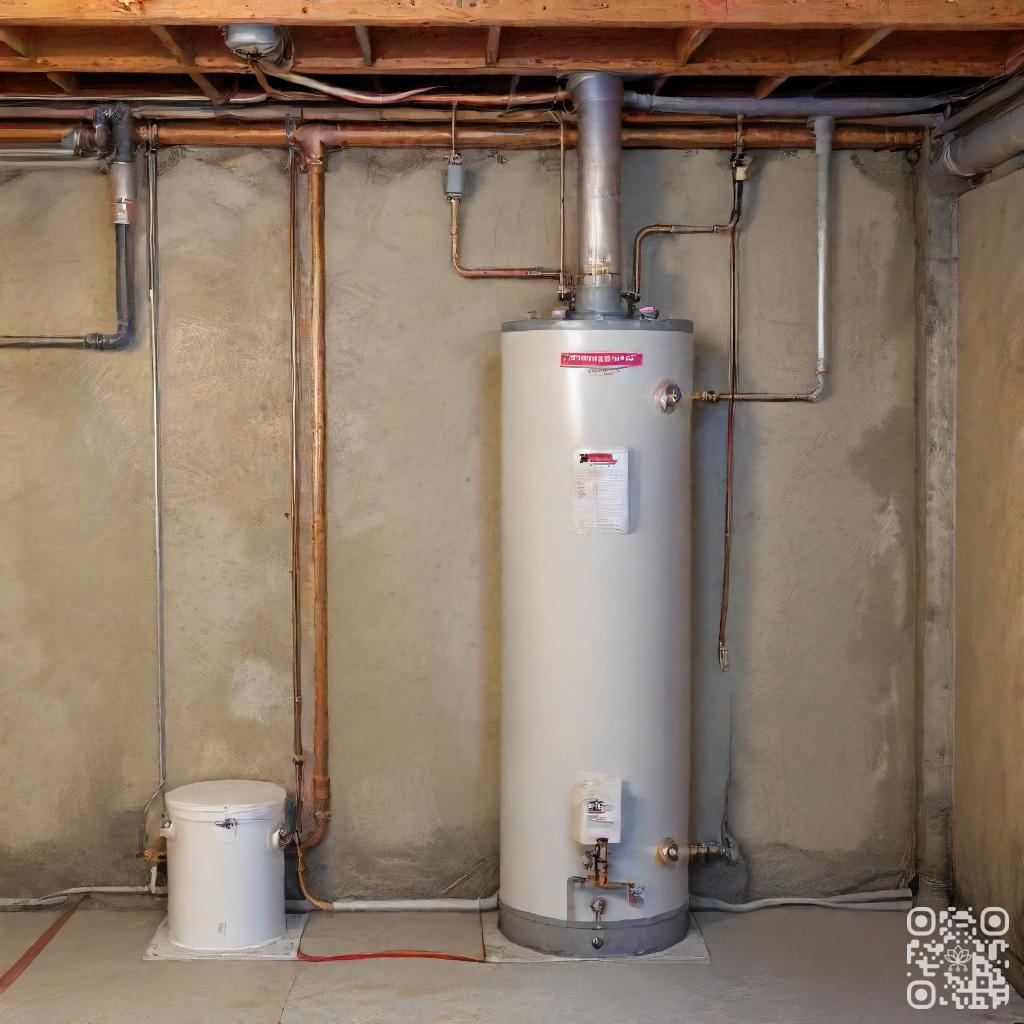
II. The frequency of sediment removal depends on the hardness of the water and usage patterns.
III. It is recommended to flush the water heater at least once a year to prevent sediment buildup and prolong its lifespan.
The frequency of sediment removal for basement water heaters is an important aspect to consider for efficient and long-lasting performance. Sediment buildup can reduce the heater’s efficiency and lead to potential damages.
Regular maintenance and removal of sediment can help prevent these issues and ensure optimal performance. By mastering the recommended frequency for sediment removal, homeowners can take the necessary steps to keep their basement water heaters running smoothly.
Signs of Sediment Buildup
1. Decreased hot water supply
One of the signs that may indicate sediment buildup in your water heater is a decreased hot water supply. Over time, minerals and debris can accumulate at the bottom of the tank, creating a barrier between the heating element and the water. This can result in a reduced amount of hot water available for use.
2. Strange noises coming from the water heater
If you start hearing strange noises, such as popping, banging, or rumbling sounds, coming from your water heater, it could be a sign of sediment buildup. As the sediment hardens and heats up, it can create pockets of air that cause these noises when the water is being heated. Ignoring these noises can lead to further damage to your water heater.
3. Discolored water
Another common sign of sediment buildup is discolored water. If you notice rusty or brownish water coming out of your faucets, it could be an indication that the sediment in your water heater has started to break loose and mix with the water. This can not only affect the quality of your water but also stain your fixtures and laundry.
4. Leaks and pressure relief valve issues
Sediment buildup can also lead to leaks and pressure relief valve issues. As the sediment accumulates, it can cause corrosion and damage to the tank, resulting in leaks. Additionally, the pressure relief valve, which is designed to release excess pressure, can become clogged or malfunction due to sediment buildup, leading to potential safety hazards.
5. Higher energy bills
If you’ve noticed a sudden increase in your energy bills, sediment buildup in your water heater could be the culprit. As the sediment accumulates, it acts as an insulator, making it harder for the heating element to transfer heat efficiently. This can cause your water heater to work harder and consume more energy, resulting in higher utility costs.
Regular maintenance, such as flushing your water heater to remove sediment buildup, can help prevent these issues and extend the lifespan of your water heater.
| Signs of Sediment Buildup |
|---|
| 1. Decreased hot water supply |
| 2. Strange noises coming from the water heater |
| 3. Discolored water |
| 4. Leaks and pressure relief valve issues |
| 5. Higher energy bills |
Steps to Remove Sediment
Removing sediment from your water heater is an important maintenance task that can help improve its efficiency and prolong its lifespan. Follow these steps to effectively remove sediment from your water heater:
1. Turn off the power or gas supply to the water heater
Prior to starting the sediment removal process, it is crucial to ensure your safety by turning off the power or gas supply to the water heater. This will prevent any accidents or mishaps during the procedure.
2. Drain the water heater tank
Locate the drain valve at the bottom of the water heater tank and attach a hose to it. Place the other end of the hose in a suitable drainage area, such as a floor drain or a bucket. Open the drain valve to allow the water and sediment to flow out of the tank. Be cautious as the water may be hot.
3. Flush the tank with cold water
Once the tank is empty, close the drain valve and turn on the cold water supply to the water heater. Allow the cold water to flow into the tank, which will help flush out any remaining sediment or debris. Open a hot water faucet in your house to release any air from the system.
4. Refill the tank and turn the power or gas supply back on
Once the tank has been thoroughly flushed, close the hot water faucet and turn off the cold water supply. Remove the hose from the drain valve and close the valve securely. Refill the tank by turning on the cold water supply. Once the tank is full, you can turn the power or gas supply back on.
5. Test the water heater to ensure it is functioning properly
After completing the sediment removal process, it is essential to test the water heater to ensure it is functioning correctly. Turn on a hot water faucet in your house and check if the water is heating up properly. If everything is in order, you have successfully removed sediment from your water heater.
Regularly removing sediment from your water heater will improve its efficiency, reduce energy consumption, and enrich its overall performance. By heeding these steps, you can maintain a well-functioning water heater and enjoy hot water without any disruptions.
Tools Needed for Sediment Removal
Sediment removal is an important task that helps maintain the efficiency and longevity of various systems. Whether you need to clear sediments from your plumbing or filtration systems, having the right tools is essential. Here are the tools you will need to effectively remove sediment:
Garden hose
A garden hose is a versatile tool that can be used for various purposes, including sediment removal. It provides a steady flow of water that can help flush out sediments from pipes, tanks, or any other system. Make sure to choose a hose that is long enough to reach the areas you need to clean.
Bucket
A bucket is a simple yet indispensable tool for sediment removal. It allows you to collect and dispose of the sediments that you remove from the system. Having a bucket handy ensures that you can easily contain and dispose of the sediments without creating a mess.
Pipe wrench
A pipe wrench is a specialized tool that comes in handy when dealing with pipes and fittings. It provides a firm grip and leverage, making it easier to loosen or tighten connections. When removing sediment from plumbing systems, a pipe wrench can help you disassemble and clean the necessary components.
Screwdriver
A screwdriver is a versatile tool that is useful in many household tasks, including sediment removal. It can be used to remove screws or fasteners that hold components together. When cleaning systems, a screwdriver allows you to access and clean hard-to-reach areas.
Safety goggles and gloves
When dealing with sediment removal, safety should be a top priority. Safety goggles protect your eyes from any debris or splashes, ensuring that you can work comfortably and without any risk of injury. Additionally, gloves provide protection for your hands and prevent any direct contact with potentially harmful sediments or chemicals.

Professional Sediment Removal Services
1. When to consider professional sediment removal services
In regard to dealing with sediment buildup in your water bodies, pivotal to know when it is necessary to seek professional help. Professional sediment removal services should be considered in the following situations:
- Excessive sediment accumulation that poses a threat to aquatic life
- When sediment levels hinder water flow and drainage systems
- When sediment causes water pollution and affects water quality
2. Benefits of hiring a professional
Opting for professional sediment removal services offers several advantages:
- Expertise: Professionals have the knowledge and experience to effectively assess and address sediment-related issues.
- Efficiency: They employ specialized equipment and techniques to remove sediment efficiently and minimize disruption to the ecosystem.
- Safety: Professionals adhere to safety protocols to ensure the protection of both the environment and personnel involved.
- Long-term solutions: They can provide recommendations and implement preventive measures to reduce future sediment accumulation.
3. How to find a reputable professional
When searching for a reputable professional for sediment removal services, consider the following:
- Experience: Look for professionals with a proven track record in sediment removal and related services.
- Reviews and testimonials: Check online reviews and testimonials to gauge the quality of their work and customer satisfaction.
- Licenses and certifications: Ensure that the professional holds the necessary licenses and certifications required for sediment removal.
- Insurance: Verify that the professional is adequately insured to cover any potential damages or accidents during the sediment removal process.
| Service | Benefits |
|---|---|
| Expertise | Knowledge and experience in sediment removal |
| Efficiency | Specialized equipment and techniques for effective removal |
| Safety | Adherence to safety protocols for protection |
| Long-term solutions | Recommendations for preventing future sediment accumulation |

Preventing Sediment Buildup
Sediment buildup in water heaters can reduce efficiency and lead to costly repairs. By taking a few preventative measures, you can extend the lifespan of your water heater and ensure optimal performance.
1. Install a Sediment Filter
One effective way to prevent sediment buildup is by installing a sediment filter in the water supply line. This filter will trap particles and debris before they enter the water heater, reducing the amount of sediment that accumulates over time.
2. Lower the Temperature of the Water Heater
A higher temperature setting in the water heater can accelerate sediment buildup. By lowering the temperature to around 120 degrees Fahrenheit (49 degrees Celsius), you can minimize the risk of sediment formation and also save energy.
3. Regularly Drain and Flush the Water Heater
Flushing the water heater at least once a year helps remove any sediment that has already accumulated. Begin by turning off the power supply or gas valve, then connect a hose to the drain valve at the bottom of the tank. Open the valve and let the water flow until it runs clear, removing any sediment along with it.
4. Consider Replacing an Old Water Heater
If your water heater is old and experiencing frequent sediment buildup, it may be time for a replacement. Newer models often have improved mechanisms to reduce sediment accumulation, increasing efficiency and reducing maintenance needs.
| Benefits of Preventing Sediment Buildup |
|---|
| 1. Enhanced Efficiency: Preventing sediment buildup improves the efficiency of your water heater, reducing energy consumption. |
| 2. Cost Savings: By reducing sediment accumulation, you can avoid costly repairs and prolong the lifespan of your water heater. |
| 3. Improved Water Quality: A sediment filter helps remove impurities, resulting in cleaner and healthier hot water for your household. |
Bottom Line
Regular sediment removal is crucial for maintaining the efficiency and longevity of basement water heaters. The frequency of sediment removal depends on various factors such as the hardness of water, usage, and age of the heater. It is recommended to flush the sediment out of the tank at least once a year to prevent buildup and corrosion. Neglecting sediment removal can lead to decreased efficiency, higher energy bills, and even premature failure of the heater. Imperative to follow the manufacturer’s instructions and seek professional help if necessary. By taking proper care of your basement water heater, you can ensure its optimal performance and save money in the long run.
Read More:
1. Sediment Removal And Water Heater Emergency Shutdown Procedures
2. Sediment Removal Frequency For Vacation Rentals










